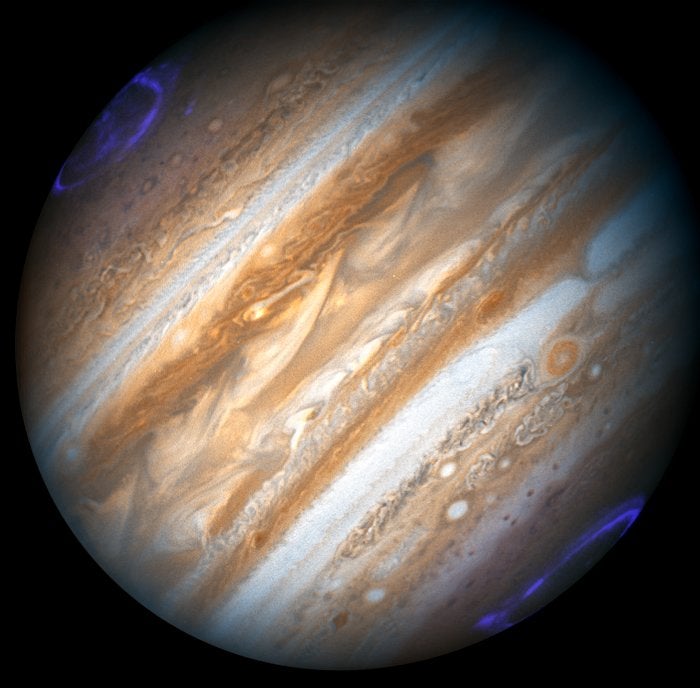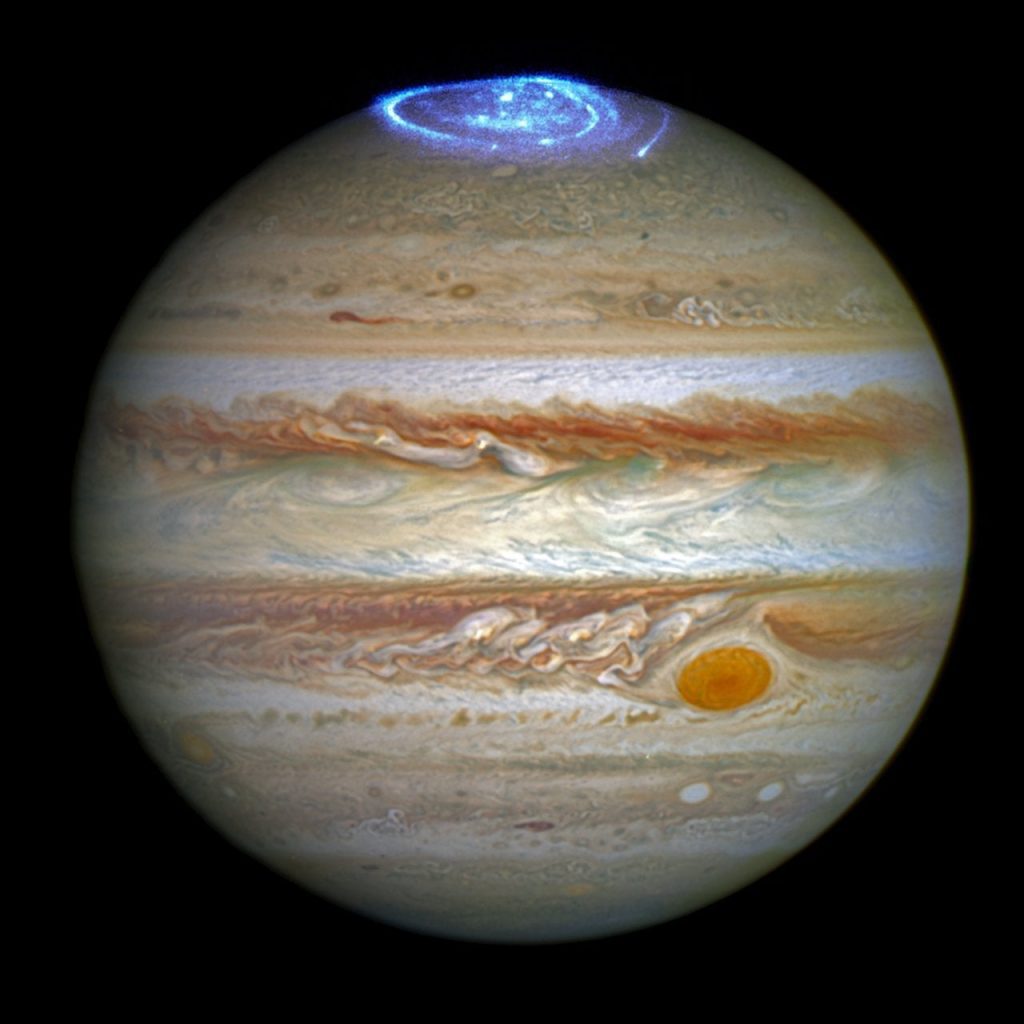Huge, endless auroras cap Jupiter’s poles, now brought into better view by Hubble’s latest image.
First discovered in 1979 by NASA’s Voyager 1 spacecraft, the auroras were then photographed in collaboration with Cassini in 2000 and again in 2007 when New Horizons flew by.
This is the first time, however, that we’ve seen Jupiter’s aurora with the Hubble Space Telescope’s ultraviolet capabilities. The north pole aurora covers an area larger than Earth, and is hundreds of times more energetic than Earth’s own auroras. Jupiter’s strong magnetic field and particles thrown by its moon Io help fuel the colorful display.

Jupiter’s auroras, 2007
Auroras form when high energy particles collide with atoms of gas in the atmosphere around a planet’s poles. This is important to study, since its components could reveal reactions happening within Jupiter’s solar wind, a stream of charged particles ejected from the Sun.
The images coincide with work done in Juno’s approach. The spacecraft will collect data in Jupiter’s solar wind, and will eventually fly over the planet’s north pole in its early July close-pass, which should allow for even more stunning views. Hubble will continue to study the auroras for about a month, and the information each gathers will help better understand this mysterious giant.









